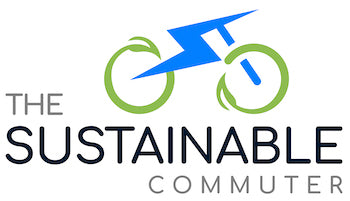
Tackling Hills and Riding on a Variety of Terrains: The Benefits of E-Bikes
Share
Electric bikes, or e-bikes, are growing in popularity around the world. They offer a range of benefits that make them an appealing transportation option for various riders and terrains. In this article, we will explore the benefits of e-bikes, including how they make tackling hills and riding on different terrains easier, their versatility and accessibility, and how they can improve health outcomes.
E-Bikes and Hills
E-bikes can assist with tackling hills and steep inclines. The motor and battery assist riders, making it easier to pedal up steep terrain. This is particularly beneficial for older riders, people with disabilities, or those who live in hilly areas. With the assistance of an e-bike, people can enjoy riding in places they may have previously avoided due to the difficulty of the terrain.
E-bikes have different motor options to suit different needs, such as pedal assist and throttle assist. Pedal-assist e-bikes provide assistance only when the rider is pedaling, while throttle-assist e-bikes assist with pushing a button or twisting a handle. Pedal-assist e-bikes are more popular because they require the rider to be active, making the experience feel more like riding a traditional bike.
The assistance provided by e-bikes is also customizable. Riders can adjust the level of assistance according to their needs and the terrain they are riding on. This means they can conserve battery power when riding on flat terrain or reserve assistance for steep inclines.
E-Bikes and Terrains
E-bikes are versatile and can handle a variety of terrains. They can be used for commuting, off-road adventures, and more. E-bike tires and frames are designed to accommodate different types of terrain. For example, fat tires provide better traction on loose or uneven terrain, while hybrid tires are a good option for e-bikes used primarily for commuting or road riding. This versatility makes e-bikes a great option for people looking to explore new places and enjoy a variety of riding experiences.
E-bikes are also more accessible than traditional bikes for many people. With the assistance provided by the motor and battery, e-bikes can help people who may not be able to ride a traditional bike due to physical limitations or fitness levels. E-bikes can also make cycling more accessible to people who live in hilly or mountainous areas, allowing them to ride comfortably and safely on difficult terrain.
E-Bikes and Health
E-bikes can encourage physical activity and improve health outcomes. They offer a low-impact form of exercise that is accessible to a wide range of people. E-bikes can also increase cycling rates and decrease car usage, improving air quality and creating a more sustainable transportation system. E-bikes have helped people become more active and make sustainable transportation choices.
E-bikes can also make cycling more enjoyable and less daunting. The assistance provided by the motor and battery can help riders overcome physical and mental barriers, such as fear of hills or long distances. This can lead to increased confidence and enjoyment in cycling, which can lead to increased physical activity and improved health outcomes.
Overall, E-bikes offer a range of benefits for tackling hills, riding on different terrains, and improving health outcomes. They are versatile, accessible, and eco-friendly. With their growing popularity, e-bikes are a great option for people exploring new places and making sustainable transportation choices.
Related Topic:
Safe Riding Practices and Regulations for E-Bike Riders
While e-bikes offer a range of benefits, riders need to follow safety practices and regulations to ensure safe riding.
E-Bike Regulations
E-bike regulations vary by country, state/province, and local municipality. Riders should check local laws and regulations before riding an e-bike. Age restrictions, power and speed limits, helmet laws, and license/registration requirements are common regulations in many jurisdictions.
In the United States, the federal government classifies e-bikes as bicycles, but states have the authority to regulate their use. E-bikes are classified into three classes based on their maximum speed and level of assistance. Class 1 e-bikes have a maximum speed of 20 mph and provide assistance only when the rider is pedaling. Class 2 e-bikes also have a maximum speed of 20 mph but can assist with a throttle. Class 3 e-bikes have a maximum speed of 28 mph and provide assistance only when the rider is pedaling.
Safe Riding Practices Safe riding practices are important for all e-bike riders. Riders should obey traffic laws, stay visible, and use appropriate speed. Wearing a helmet and checking the e-bike before each ride are also important safety practices. These safe riding practices can prevent accidents and injuries and ensure safe riding for all.
Riders should use lights and reflectors, wear bright clothing, and use hand signals when turning or changing lanes to stay visible. Using appropriate speed means slowing down in congested areas and using extra caution when riding on uneven terrain.
E-Bikes vs. Traditional Bikes and Vehicles
E-bike safety compared to traditional bicycles and motor vehicles. While e-bikes have their own set of safety considerations, they can offer a safer transportation option than traditional bicycles and motor vehicles. E-bikes are subject to the same traffic laws as traditional bicycles and tend to have wider tires and more stable frames than traditional bicycles, making them safer on uneven terrain.
Compared to motor vehicles, e-bikes are smaller and quieter, making them less likely to cause serious injury or damage in the event of an accident. However, e-bikes can still reach high speeds, and riders should be aware of their surroundings and use caution when riding near pedestrians, other cyclists, and motor vehicles.
Final Thoughts
E-bike safety regulations and safe riding practices are important for all e-bike riders. By following regulations and using safe riding practices, e-bike riders can enjoy the benefits of this eco-friendly and versatile form of transportation. E-bikes offer a safer transportation option than traditional bicycles and motor vehicles, but riders should still be cautious and aware of their surroundings.
